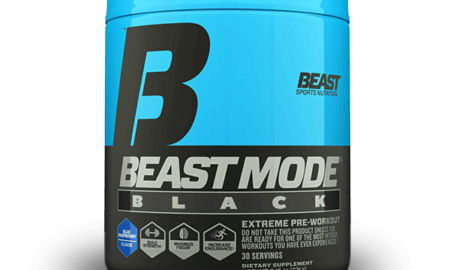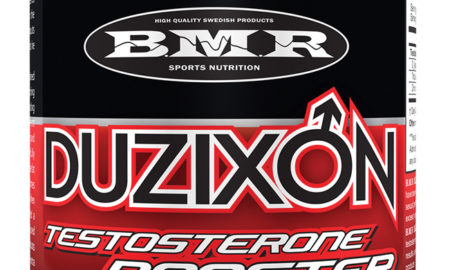Although anabolic steroid users rarely experience serious side effects, it could happen. Whether it does depends on several factors, the most important of which is dosage: The more drugs you take and the higher the quantity, the greater the chance of side effects. The drug cycles commonly used today by elite athletes, including many bodybuilders, fall into the high-risk range. A related factor is how long you stay on a drug cycle. Most rational athletes are aware of the health risks and cease using the drugs periodically. Some go on high-dose drug regimens only prior to a contest or athletic event.
Studies show that getting off all drugs usually means body and organ function will return to normal. “Drug holidays” explain why you don’t hear of many more serious side effects among athletes who use anabolics. Besides, most bodybuilders and athletes, even those who use high-dose drug cycles, are otherwise quite healthy. They have less than normal bodyfat, no high blood pressure, and, while their blood lipids can be abnormal when they’re taking oral steroids, the aberrant lab values return to normal, often better than normal, when drug use stops. Also keep in mind that bodybuilders are more aware of nutrition and don’t permit themselves to eat more than small amounts of junk food.
The organs most susceptible to side effects are those within the cardiovascular system and the liver. Oral steroids are particularly culpable in that regard. They hasten the breakdown in the liver of protective high-density-lipoprotein cholesterol, or HDL, which increases the risk of cardiovascular disease. Both oral and injectable versions of anabolic steroids can cause adverse structural changes in the muscle cells of the heart that can predispose a user to sudden death. Since anabolic steroids also increase sodium retention, there’s always the threat of hypertension. High blood pressure is a major risk factor for cardiovascular disease and the number-one risk factor for stroke.
Oral steroids are designed to resist breakdown in the liver, which would result in rapid deactivation. As a result, they can accumulate in the liver to the extent that they cause an inflammation of the liver, a chemical hepatitis. An inflamed liver tends to interfere with bile circulation, which can damage liver cells. If not treated or if the oral drugs continue to be used, excessive liver cell destruction can ensue. In a worst-case scenario that can result in life-threatening problems, such as peliosis, a collection of blood-filled cysts in the liver. The medical literature shows that this side effect, though rare, has occurred in a few competitive bodybuilders. The good news is that the liver has a remarkable ability to regenerate. You can remove three-fourths of the liver and still survive—though that isn’t recommended.
Until recently, the kidneys were thought to be only indirectly affected by high-dose anabolic steroid use. Case reports linking steroids to kidney problems are rare.1 Like the liver, the kidneys are designed to take a lot of abuse. High blood pressure that develops as a result of drug use can harm the kidneys. The kidneys themselves have higher blood pressure to effectively filter the blood, but when systemic blood pressure rises excessively, the nephrons, which are the filtering units of the kidneys, are slowly destroyed. While high blood pressure is a silent disease, it does show up easily. As a result, bodybuilders who use high-dose steroid regimens and get high blood pressure often take measures to help blood pressure return to normal.
According to a controversial new study, long-term high-dose anabolic regimens alone can seriously harm the kidneys—even to the extent of kidney failure. The study was presented in late October at the 42nd annual meeting of the American Society of Nephrology, all kidney specialists and scientists, and later published in a medical journal.2 One presentation has particular relevance for those taking anabolic steroids. The study examined 10 bodybuilders, of whom six were Caucasian and four were Hispanic. They were identified from medical records that covered a 10-year span. All were long-term steroid users. They stood out because all showed some form of kidney disease, marked by excessive loss of protein in the urine, along with severe reduction in kidney function.
Testing revealed that nine out of the 10 bodybuilders had developed a condition known as focal segmental glomerulosclerosis. FSGS involves the formation of scar tissue in the kidneys. It usually results from excessive stress on the kidneys and is often seen in morbidly obese people. Interestingly, the extent of FSGS seen in the bodybuilders exceeded that seen in very fat people.
Finding FSGS among bodybuilders isn’t unprecedented. Pro-bodybuilding star Flex Wheeler announced in 1999 that he was suffering from the disease. His doctor said that Flex’s case was genetic and that the disease was more common in black people; in 2003 Wheeler had a kidney transplant. The type of FSGS that Wheeler had, assuming that it was indeed genetic, is termed primary FSGS, since there is no specific underlying cause. The type that arises from drug use or an outside-the-body toxin is called secondary FSGS. The secondary form is also associated with morbid obesity and diabetes.
The connection to steroid use in the new study became apparent when the bodybuilders got off steroids. All showed improvement in kidney function, with the exception of one, who went on to develop end-stage renal failure that required use of a dialysis machine to filter his blood. Another of the bodybuilders went back on the drugs and suffered a relapse of his kidney condition.
To get more information about the groundbreaking study and its implications, I contacted the lead author of the study, Leal Herlitz, M.D., a research pathologist at Columbia University Medical Center in New York. Here’s what she told me:
JB: Were the bodybuilders in your study amateurs or pros?
LH: As far as I know, two of the 10 patients were professional bodybuilders, the rest amateurs.
JB: The bodybuilders in the study were described as “long-term steroid users.” What was the average history of drug use among the men?
LH: It was hard to pin down a precise time frame for many of them, but those who did discuss it mentioned a range of use from eight to 20 years.
JB: A press release on your study mentioned that an extreme level of muscle mass stresses the kidneys. What is the mechanism that links large muscle mass to kidney damage?
LH: The kidneys are the main filtering organ for the body and are composed of small filtering units called glomeruli. You’re born with a certain number of glomeruli, and they can’t regenerate or increase in number. When you gain an extreme amount of muscle mass, each of those individual filters must work a little harder to help the body dispose of waste products. If the glomeruli become overworked, they can become damaged to the extent that they scar. That pattern of injury is called focal segmental glomerulosclerosis.
JB: If extreme muscle mass may constitute a risk factor for the development of FSGS in bodybuilders, what causes it in people who are very fat?
LH: We believe that what stresses the glomeruli is the amount of fluid they must filter. Think of it as a question of volume and blood flow. In both increased lean and fatty body mass there’s an increase in blood and plasma volume that needs to be filtered. We use the term glomerular filtration rate, or GFR, to express how much each glomerulus is filtering. In both obese and muscular patients there’s an increase in GFR, at least in the early stages before the kidney begins to scar. If the increase puts sufficient strain on the glomeruli, they may begin to scar. What makes some people more susceptible to this than others is unclear. Insulin resistance also plays a role in the incidence of FSGS in the obese. While obese people have a lot of bodyfat, they also have a higher level of muscle too.
JB: Could the typical high-protein diet of most bodybuilders play a role in the development of FSGS?
LH: In people with normal kidney function, a high-protein intake isn’t usually a problem. But a high-protein diet does increase renal blood flow, which would increase the GFR. If the kidneys are already working overtime to handle the increased demands placed on them by body size, a high-protein diet may exacerbate this. Likewise, in patients who have documented renal disease, a lower protein intake does remove some stress from the kidneys. Within normal ranges, protein intake is unlikely to be a major player, but for someone who weighs 300 pounds and whose kidneys are already working pretty hard, eating 550 grams of protein a day is just another added stress.
JB: From what you’ve said, it seems that just having large muscles can be harmful to kidney function. But as far as I know, most bodybuilders show normal lab values in kidney tests. How do you explain that?
LH: I have no trouble believing that. I think that the patients in our study are extreme examples. I’m willing to bet that there are plenty of people like them who have no detectable kidney injury. What makes one person more susceptible than the next isn’t clear. It’s likely that to develop the kind of kidney injury we saw in our study, a patient must both cause injury and be susceptible to the damage. Who is going to be susceptible is anybody’s guess.
JB: Considering that bodybuilding has been popular for more than 100 years, I would have thought that more cases of FSGS would have shown up. That suggests to me that those affected must have some sort of predisposition to the disorder. Does that make sense to you?
LH: I think you’re right about needing some sort of predispositon. That said, most kidney disease is never biopsied, and renal dysfunction, especially in middle-aged or older people, is usually attributed to hypertension or other common disorders. The entity of secondary FSGS is a relatively new construct (last 20 years or so) and as a pathologist, I struggle every day to make it clear to nephrologists when I think a patient has FSGS that’s due to obesity or hypertension. The last thing patients need is treatment with prednisone, a corticosteroid, or other immunosuppressant, which are the mainstays of treatment for primary FSGS.
Part 2 of this interview will appear next month.
Editor’s note: Jerry Brainum has been an exercise and nutrition researcher and journalist for more than 25 years. He’s worked with pro bodybuilders as well as many Olympic and professional athletes. To get his new e-book, Natural Anabolics—Nutrients, Compounds and Supplements
That Can Accelerate Muscle Growth Without Drugs, visit www.JerryBrainum.com. IM
References
1 Hartung, R., et al. (2001). End-stage renal disease in a bodybuilder: a multifactorial process or simply doping? Nephrol Dial Transplant. 16:163-65.
2 Herlitz, L.C., et al. (2010). Development of focal segmental glomerulosclerosis after anabolic steroids. J Am Soc Nephrol. In press.




















You must be logged in to post a comment Login